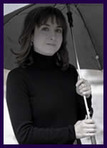Amanda McCabe's Blog, page 15
January 24, 2022
Monday Cocktail
Orange Pineapple Margarita
2 oz Tequila 1 oz Triple Sec 1 oz Fresh Orange Juice 2 oz Pineapple Juice 1/2 oz Fresh LimeCombine all in a shaker with ice. Mix it up and pour into a rimmed glass...
January 23, 2022
Historical Wedding Weekend
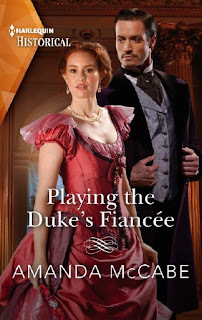
On January 24, 1874, Prince Alfred, son of Queen Victoria, married Grand Duchess Marie, daughter of the Russian tsar, in an amazingly lavish ceremony in St Petersburg! In my book Playing the Duke's Fiancee, I sent my characters off to Russia to attend the wedding, and absolutely loved researching the grand event! Here's a bit about how it all went...
When I started writing Violet’s story, I was so excited to combine two of my old passionate interests into one book—the history of the British royal family, and nineteenth century Russia! I also got to bring in another interest of mine, which might not really seem to fit into the 1870s—1930s screwball comedies! I love it when strait-laced Cary Grant begins to enjoy life thanks to Katherine Hepburn or Irene Dunn, learning to have fun at last. I also got to learn something quite new to me, Victorian photography.
Much like Prince Charles and Lady Diana in the 1980s, Prince Alfred (second son of Queen Victoria, a career naval officer) and Grand Duchess Marie, only daughter of Tsar Alexander II (who had many, many sons!) was the wedding of the year. They met in 1868, but neither family approved of the match, and they didn’t marry until January1874. It was a very lavish wedding at the Winter Palace, an Orthodox ceremony followed by an Anglican blessing, then a banquet for 700 and ball for 3000 until the early hours of the morning. It was the sensation of the newspapers, with a Who Is Who guest list of people like the Prince and Princess of Wales, Princess Royal Vicky and her husband, Prince Arthur, and the elderly Ernst, Duke of Saxe-Coburg (who had no legitimate children so Alfred eventually was his heir). (For more wedding details, I love the sadly now defunct blog, Order of Sartorial Splendor, whose archives are a gold mine!).
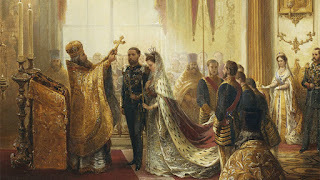
The couple had five children, one son and four daughters (including the famous Marie of Romania), but it was not a happy union in the end. They had little in common, and the prince was often gone on his naval assignments. They moved often, including to Malta and Coburg, and came to be titled Duke and Duchess of Edinburgh. Marie did not like English life, and was a Russian Orthodox grand duchess all her life. She died in 1920 in Switzerland, long after her husband, in reduced circumstances. I am sure Violet and William are MUCH happier in their life together!
(One quick note on the photographic exhibit Violet visits—it’s based on a famous display in 1864, a “Bazaaar for the benefit of female artists” at the Horticultural Gardens at Chiswick. The photographers Julia Cameron, Clementina Hawarden, Lewis Carroll, and Oscar Rejlander are of course real figures, as are the royal family.)
If you’re curious about the time period, I loved these sources for further study! And visit me at ammandamccabe.com for more info!
Photography
Todd Gustavson, Camera: A History of Photography (2009)
Alma Davenport, The History of Photography: An Overview (1991)
Bruce Bernard, Photo Discovery: Masterworks of Photography 1840-1940 (1980)
Victoria Olson, From Life: Julia Margaret Cameron (2003)
Victorian Giants: The Birth of Photography (exhibition catalog)
BEC Howarth-Loomes, Victorian Photography (1974)
Royalty
Daphne Bennett, Queen Victoria’s Children (1980)
John Van Der Kiste, Alfred: Queen Victoria’s Second Son (2013)
Julia Baird, Victoria the Queen (2016)
Adrian Tinniswood, Behind the Throne: A Domestic History of the British Royal Household (2018)
Daphne Bernard, Vicky: Princess Royal of England and German Empress (1971)
Jane Ridley, The Heir Apparent: A Life of Edward VII (2013)
Marie, Queen of Romania, The Story of My Life (reprint 2019)
Richard Hough, Edward and Alexandra
Russia
Stefano Papi, Jewels of the Romanovs (2010)
Mathilde Kschenssinskaya, Dancing in Petersburg (1961)
The Last Grand Duchess: Memoirs of Grand Duchess Olga (1964)
Russia: Art, Royalty, and the Romanovs
Susan McCaffray, The Winter Palace (2018)
January 11, 2022
Pre Order Time!
Winning Back His Duchess, book 3 of the "Dollar Duchesses" series (Rose's story) is
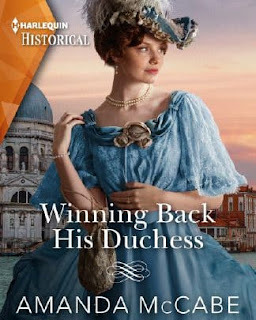
up for pre-order now! Isn't the cover lovely???
January 9, 2022
Fun Weekend Links
A little late in the weekend, but better late than never!!! I hope you all had a lovely holiday season. I've finally put the decorations away, and am digging out to try and concentrate on writing the new book. In the meantime, here are a few fun reads I've come across lately...
Legendary Nights With The Bright Young Things
The Duchess of Cambridge Turns 40!
Everyone Is Dressing Like A Bookstore Regular
The Great Sidney Poitier Passed Away
The Last Letter Of Mary Queen Of Scots
Walt Disney Borrowed From 18th Century France For Princess Culture
When Montmartre Was Harlem On The Seine
An Intimate Glimpse Of Frida Kahlo's Blue House
Santa Fe's La Fonda On The Plaza Turns 100 (I used this gorgeous place a lot in my Santa Fe 1920s Mysteries!)
December 18, 2021
Heroine of the Weekend
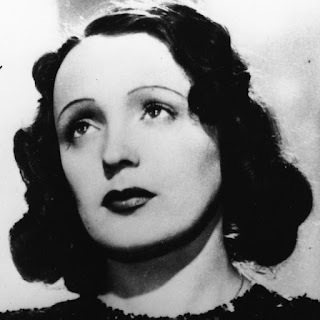
This weekend's heroine is that quintessentially French singer Edith Piaf (born December 19, 1915, died October 10, 1963)...
Edith Piaf - La vie en rose (Officiel) [Live Version] - Bing video
December 13, 2021
More Tudor Christmas History

(This is a bit of info I researched when writing The Winter Queen! On a side note, the anthology Tudor Christmas Tidings is on sale for 1.99 right now!!! 3 great novels in one...)
In 1564, Elizabeth I was 31 years old and had been on the throne for six years. They were very challenging years; her sister Queen Mary had left England in financial and religious turmoil, and Elizabeth had to fix all of this as well as fend off suitors and increasing pressure from her ministers to marry. In October 1562 she survived a bout of smallpox; in 1563, plague swept the country. By Christmas of 1564, the Queen and her Court were ready to party, but it proved to be the coldest winter in living history. Even the Thames froze through, but Elizabeth wasn’t going to keep this from spoiling her fun! In fact, she used the terrible weather to make the holiday even more special.
Elizabethan Christmases were literally “the twelve days of Christmas,” culminating in a huge feast on Twelfth Night (January 6). Each day had its own activity—the bringing in of the Yule log on Christmas day; a fox hunt on St. Stephen’s Day, December 26 (where the Queen would ride down the Strand, through Cheapside, and over London Bridge to Greenwich Great Park, among the cheers of the crowds gathered to see her). There were plays, dancing, and feasting every night. When the Thames was deemed solid on December 21, a Frost Fair was set up on the ice, with booths selling food, warm cider, and ribbons, as well as sledding, skating, and games. (This works very well for my Swedish hero, Anton, who attempts to teach the heroine Rosamund to skate!)
But it wasn’t all feasting and games. The Queen kept Christmas at Whitehall that year, and as usual there was a tremendous amount of political skullduggery going on in the palace’s vast corridors. Her Privy Council and chief advisor Lord Burghley still pressed her to marry, and there was no shortage of eager suitors. King Eric XIV of Sweden (who in 1568 would be declared insane and overthrown by his brother) was fighting two wars and needed an influential wife. Elizabeth turned him down when she first came to the throne in 1558, but he tries again. (Anton Gustavson comes to London as part of the diplomatic party from Stockholm. But he has his own agenda in England—and Rosamund Ramsay is a complication he doesn’t need!). The Austrians and French, too, want to try their luck in the marital stakes.
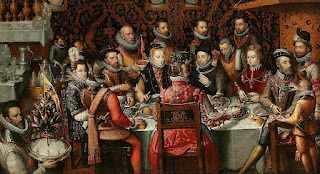
Her own marriage isn’t the only one concerning Elizabeth in 1564. Her cousin to the north, Mary Queen of Scots, is being troublesome (as usual). The beautiful widow is looking for a new husband, and rumor has it she’s settled on her own cousin, Lord Darnley (handsome and well-connected, but drunk and mean). Elizabeth offers her an alternative—Robert Dudley, Earl of Leicester. As Dudley is well-known to be Elizabeth’s own favorite, Mary is less than enthused, but she does send a party (headed by Sir James Melville) to discuss the matter.
My heroine, Lady Rosamund, lands right in the middle of all this Christmas intrigue! Her parents disapprove of her romantic flirtation with their neighbors’ unreliable son, and hope by sending her to Court as one of the Queen’s Maids of Honor she will be distracted (and find a better match!). There were many levels of service to the Queen for high-born ladies—there were ladies of the Bedchamber (the highest honor), the Privy Chamber, and the Presence Chamber, as well as the six Maids. These were unmarried young ladies, paid 40 pounds a year to walk with the Queen, sit with her, go with her to church, etc. And the Queen did not like for them to have romances. The history of the Elizabethan Court is littered with tales of young women who landed in the Tower for getting caught in dalliances—as Rosamund and Anton know well…
Here are a few great sources I found when researching The Winter Queen:
 Liza Picard, Elizabeth’s London
Liza Picard, Elizabeth’s London
Janet Arnold, Queen Elizabeth’s Wardrobe Unlock’d and Patterns of Fashion, 1560-1620
Anne Somerset, Elizabeth I and Ladies in Waiting: From the Tudors to the Present Day
Dunlop, The Palaces and Progresses of Elizabeth I
Alan Haynes, Sex in Elizabethan England
Alison Sim, Food and Feast in Tudor England
Maria Hubert, Christmas in Shakespeare’s England
Simon Thurley, Whitehall Palace: The Official Illustrated History
Josephine Ross, The Men Who Would Be King
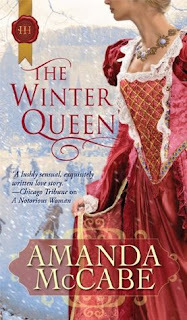
And in case you want to do your own Elizabethan Christmas feast, a few period recipes (and good luck!!):
Figgy Pudding: Chop ½ pound dried figs and mix with ¼ cup bread crumbs. Lightly brown 1 cup of “autumn gathered” walnuts and mix with 1 cup brown sugar, 3 tbsp melted butter, 4 beaten eggs, and spices (1/2 tsp cinnamon, ¼ tsp nutmeg). Bake for at least an hour and serve with cream or “hardsauce” (made from Madeira or malmsey!)
Twelfth Night Cake: In a bowl, combine ½ cup orange juice with 1 cup golden and 1 cup dark raisins and let stand. Cream 1 cup butter, 1 cup sugar, 2 cups wheat flour, and 4 fresh eggs. Add the undrained raisin mixture and a pinch of cinnamon. Stir together and bake until a knife inserted in center comes out clean. Melt 3 tbsp of honey to glaze the cake, decorating with candied cherries. They often add a pea and a bean, so the finder of the bean is king for the evening and the finder of the pea is queen!
Roast Peacock: Take a peacock, break its neck and drain it. Carefully skin it, keeping the skin and feathers together with the head still attached by the skin of the neck. Roast only the bird, with the legs tucked under. When it is roasted enough, take it out and let it cool. Sprinkle cumin on the inside of the skin, then wind it with the feathers and tail around the body. Serve with the tail feathers upright, its neck propped up from within and a lighted taper in the beak. If it is a royal dish, cover the beak with fine gold leaf. Serve with ginger sauce (and lots of pomp and ceremony)
Maids of Honor: Make pastry dough enough for a double-crust pie. Preheat brick over by burning wood or coals inside, then rake them out. Roll out pastry and cut in rounds, then fit in small tartlet tins. Prick pastry with fork tines. Bring to near boil ½ pint cow’s milk with 4 level tbsp white breadcrumbs. Remove from heat and leave for a few minutes. Into that mixture beat 8 tsps butter, cut in cubes, 2 tbsp sugar, grated rind of one lemon, and ¾ cup blanched almonds. Be sure the mixture is not lumpy. Beat in 3 eggs. Half fill the pastry shells and bake for 15 minutes or until mixture is golden brown.
December 10, 2021
Fun Weekend Links

Kate hopes your holiday month is going well! And here are a few fun articles to keep you distracted....
Finding the Musical Spirit of Notre Dame
How To Make Your Home Feel Like a Wes Anderson Set
What Was So Special About Great Garbo
Celebrating the Lost Work of Shakespeare's Female Editors
How to Celebrate Christmas Like Charles Dickens
The Queen's Devoted Mistress of the Robes Has Died at 101
The Hidden Agency of Women in Medieval Poetry
A story of the salvation of a Tudor Great Chamber
Re-reading Mrs. Dalloway During a Pandemic
And the royals had a festive carol service at Westminster Abbey, and everyone wore great coats!
And your Holiday Cocktail of the Week:
Frozen Cranberry Daiquiri
2 oz Rum1 oz Cranberry Liqueur 1/2 oz Fresh Lime Juice 3 oz Cranberry JuiceCombine all in a blender with ice. Mix until desired consistencyDecember 8, 2021
Christmas in Tudor England
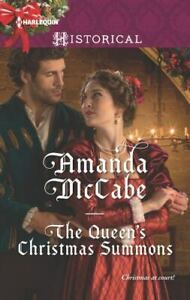
I always love the research that goes into a making a historical novel, and so often I don't get to share quite as much of it as I would like! (Yes, serious research nerd here, lol!) So I'm going to be giving some "behind the book" glimpses here, starting with The Queen's Christmas Summons, which set a lavish Court Christmas in the aftermath of the Spanish Armada...
The Spanish Armada (Grande y Felicisima Armada, “great and most fortunate navy”) was one of the most dramatic episodes of the reign of Elizabeth I, and one of her defining moments. If it had succeeded, the future of England would have been very different indeed, but luckily, weather, Spanish underpreparedness, and the skill of the English navy were on the queen's side. The mission to overthrow Elizabeth, re-establish Catholicism in England, and stop English interference in the Spanish Low Countries, was thwarted.
King Philip began preparing his invasion force as early as 1584, with big plans for his fleet to meet up with the Duke of Parma in the Low Countries, ferry his armies to England, and invade. His first choice as commander was the experienced Marquis of Santa Cruz, but when Santa Cruz died Philip ordered the Duke of Medina Sedonia to take command of the fleet. The Duke was an experienced warrior - on land. He had no naval background, and no interest in leading the Armada, as the invasion fleet came to be called. He begged to be dismissed, but Philip ignored the request, as well as many other good pieces of advice about adequate supplies and modernizing his ships.
After many delays, the Armada set sail from Lisbon in April 1588. The fleet numbered over 130 ships, making it by far the greatest naval fleet of its age. According to Spanish records, 30,493 men sailed with the Armada, the vast majority of them soldiers. A closer look, however, reveals that this "Invincible Armada" was not quite so well armed as it might seem. Many of the Spanish vessels were converted merchant ships, better suited to carrying cargo than engaging in warfare at sea. They were broad and heavy, and could not maneuver quickly under sail. The English navy, recently modernized under the watch of Drake and Hawkins, was made up of sleek, fast ships, pared down and maneuverable. Naval tactics were evolving; it was still common for ships to come alongside each other and allow fighting men to engage in hand to hand combat. Advances in artillery were only beginning to allow for more complex strategies and confrontations at sea. At this stage the English were far more adept at artillery and naval tactics than the Spanish, who were regarded as the best soldiers in Europe.
The Spanish plans called for the fleet to sail up the English Channel and rendezvous off Dover with the Duke of Parma, who headed the Spanish forces in the Netherlands. This in itself presented huge problems. Communications were slow, and the logistical problems of a rendezvous at sea were immense. Perhaps worst of all the problems faced by the Armada was Philip himself. The king insisted on controlling the details of the Armada's mission. He issued a steady stream of commands from his palace of the Escorial, yet he seldom met with his commanders, and never allowed his experienced military leaders to evolve their own tactics. He did not listen to advice, which was a shame, for Philip had little military training and a poor grasp of naval matters. He firmly believed that God guided him, and that therefore his mission would succeed.
A series of signal beacons atop hills along the English and Welsh coasts were manned. When the Spanish ships were at last sighted of The Lizard on July 19, 1588, the beacons were lit, speeding the news throughout the realm. The English ships slipped out of their harbor at Plymouth and, under cover of darkness, managed to get behind the Spanish fleet. The Spanish sailed up the Channel in a crescent formation, with the troop transports in the center. When the Spanish finally reached Calais, they were met by a collection of English vessels under the command of Howard. Each fleet numbered about 60 warships, but the advantage of artillery and maneuverability was with the English.
Under cover of darkness the English set fireships adrift, using the tide to carry the blazing vessels into the massed Spanish fleet. Although the Spanish were prepared for this tactic and quickly slipped anchor, there were some losses and inevitable confusion. On Monday, July 29, the two fleets met in battle off Gravelines. The English emerged victorious, although the Spanish losses were not great; only three ships were reported sunk, one captured, and four more ran aground. Nevertheless, the Duke of Medina Sedonia determined that the Armada must return to Spain. The English blocked the Channel, so the only route open was north around the tip of Scotland, and down the coast of Ireland. Storms scattered the Spanish ships, resulting in heavy losses. By the time the tattered Armada regained Spain, it had lost half its ships and three-quarters of its men, leaving a fascinating trove of maritime archaeological sites along the Irish coast (and myths of dark-eyed children born to Irish women and rescued Spanish sailors! In reality, most of them met fates far more grim and sad).
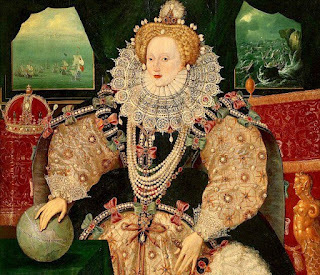
In England the victory was greeted as a sign of divine approval for the Protestant cause. The storms that scattered the Armada were seen as intervention by God. Services of thanks were held throughout the country, and a commemorative medal struck, with the words, "God blew and they were scattered" inscribed on it.
If you'd like to read more about this fascinating and tragic event, here are a few sources I liked:
Robert Milne-Tyne, Armada!, 1988
Ken Douglas, The Downfall of the Spanish Armada in Ireland, 2009
Neil Hanson, The Confident Hope of a Miracle: The True History of the Spanish Armada, 2003
Laurence Flanagan, Ireland's Armada Legacy, 1988
James Hardiman, The History of the Town and Country of Galway, 1820
Colin Martin, Shipwrecks of the Spanish Armada, 2001
Garrett Mattingly, The Armada, 1959
May 22, 2021
Cocktail of the Weekend
Fun Weekend Links
When "getting back to normal" can feel terrifying
A lost Italian village emerges after 70 years underwater
Hidden inscriptions discovered in Anne Bolyen's Prayer Book
Princess Beatrice is expecting her first baby! Congratulations
Brooches are making a style comeback, yay!



